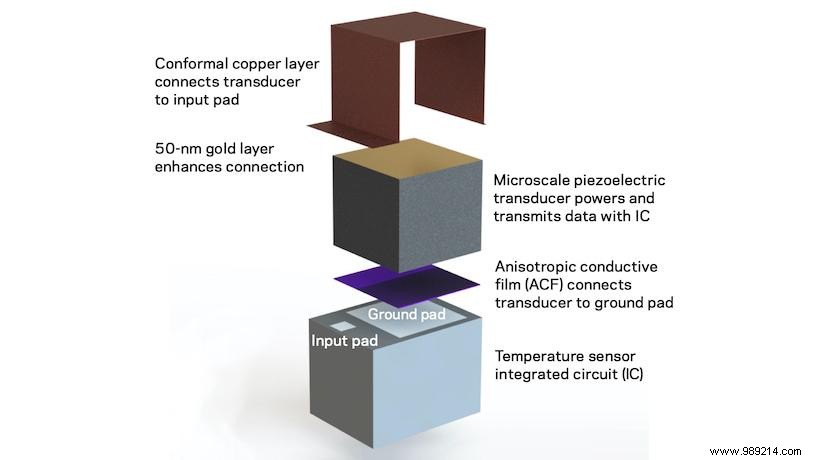A recent US study revealed the creation of a system on a single chip covering an area of less than 0.1 mm³. According to the researchers, the ultrasound-based device can be injected into the human body to measure its temperature.
In 2019, the American company Omnivision unveiled a tiny camera whose dimensions appear in the Guinness Book of World Records. At 0.575mm in length, 0.575mm in width and 0.232mm in height, this camera is smaller than a grain of rice . According to the creators, the device could be suitable for many medical examinations (brain, ENT, gynecological, etc.).
In a publication in the journal Science Advances on May 7, 2021, researchers from Columbia University in New York (USA) presented the smallest injectable system integrated into a single chip! Square in shape, the chip measures only 0.3 millimeters on a side, or a volume of less than 0.1 mm³. Its size is such that it can fit inside a hypodermic needle, and of course, can only be seen under a microscope.
"This is a new 'system chip' idea. This chip which alone, without anything else, is a complete functional electronic system. This should be revolutionary for the development of wireless miniaturized medical devices to be implanted and able to detect different things", said Ken Shepard, lead author of the work in a statement.
The researchers explain that this simple system is intended to measure body temperature during ultrasound therapy. It is a question of a very specific use which naturally stems from the miniaturization of the device itself. In addition, you should know that a significant number of small devices use radio frequencies for the purpose of communicating. Nevertheless, the wavelength concerning these devices remains too large for this chip microscopic.

Furthermore, it is completely impossible to integrate a stack. The scientists then opted for the use of a piezoelectric transducer . The latter allows communications as well as ultrasonic feeding. The device is also paired with a low-power temperature sensor. The system therefore embodies a kind of probe allowing the measurement of body temperature in real time.
The device inside a parylene capsule – ensuring biocompatibility – has undergone a battery of tests, the results of which are encouraging. The researchers implanted it in mice to a depth of 2cm and say it's theoretically possible to go as deep as 5.7cm. In addition, research is continuing to give the system the ability to measure other biological parameters using chemical or pH sensors.